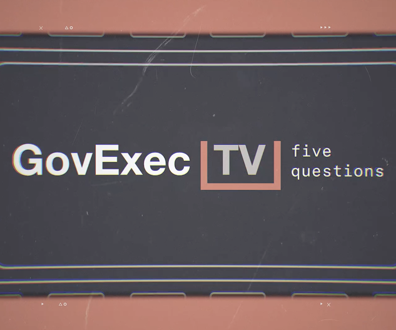
Robert Kneschke/Shutterstock.com
So, What Will It Take to Improve Morale?
The choices are to manage within the existing framework, or change the design.
It seems everywhere managers are trying to find ways to improve morale within their organizations, and the federal government is no exception. While the Federal Employee Viewpoint Survey indicates there are plenty of opportunities for improvement, it’s troubling that morale appears to be waning.
So, what can be done to improve morale? Essentially, there are two options: Better manage within the existing work design, or change the design.
Managers should focus on two key areas: Connecting employees to the organization’s mission and examining the way managers treat employees.
Connecting Employees to the Mission
The best incentive the government has is its noble mission. Responses to the FEVS make it clear that employees take great pride in their respective missions because they want to be part of something special. Unfortunately, workload pressures, poor management systems and politics cause feds to feel that they are only there to “produce numbers.” Subsequently, they become disconnected from the mission. From their perspective, merely “producing numbers” is not what they signed up for.
Some effective ways to connect employees to the mission include:
- Visual management. By designing your workspace to reflect and reinforce the mission, the organization’s history, objectives, and successes are communicated. Such an approach ensures employees can see and feel your mission every day—helping remind them of the importance of what they do. Pictured is one of the many displays used by the Los Angeles Veterans Affairs Regional Office when I served as director. Note: this approach is most effective when it reinforces a culture that is designed to be customer-oriented.

- Careful measurement. Many agencies focus so much attention on measuring widgets, that all they get are widgets. Consider developing a balanced scorecard that measures overall service to customers. Measure not only productivity, quality and timeliness, but also customer satisfaction, as well as employee satisfaction and development. Then, produce one overall score that weights all of the above categories in relation to each other. This sends a powerful message that the organization is about service, not widgets.
Improving the Way You Manage
Perhaps the biggest complaint among government employees involves the way leaders run their organizations. Many employees feel managers are not serious about delivering outstanding performance, do not treat them as professionals and are unwilling to proactively address the tough stuff. Some key ideas for managers tackling employee morale issues include:
- The right philosophy. If a manager doesn’t trust employees and feels the need to control or micromanage them, the most that can be expected from is compliance. On the other hand, if employees are trusted, they will commit themselves to the organization. A manager’s philosophy ultimately becomes a self-fulfilling prophecy.
- Communication. The more employees are kept in the loop, the more they will feel valued. Explain what is going on at the national level. Let them know what is going on locally and why. Also, provide them with periodic and honest feedback. When employees feel valued, they will give value in return.
- Reviewing management systems and how they are applied. Systems need to be integrated, have a clear line of sight and send a consistent message. They also need to be applied equally to everyone and result in reliable consequences for every level of performance and behavior. When done well, this lets employees know that the organization is serious and professional, and is looking to foster an energetic and performance-driven culture.
- Dealing with difficult employees. This is one area government employees consistently complain about. After all, no one wants to work next to someone who doesn’t pull his/her weight yet receives the same pay, benefits and promotional opportunities. It is critical to deal with a poor performer, and not simply move or promote the individual.
Stewart Liff is a fellow with The Performance Institute, specializing in human resources management, visual performance management and team development. He is the author or co-author of seven books, including Managing Government Employees and A Team of Leaders. He can be reached at Stewart.Liff@Performanceinstitute.org.
(Image via Robert Kneschke/Shutterstock.com)
NEXT STORY: Is It Possible to Lay People Off Nicely?






